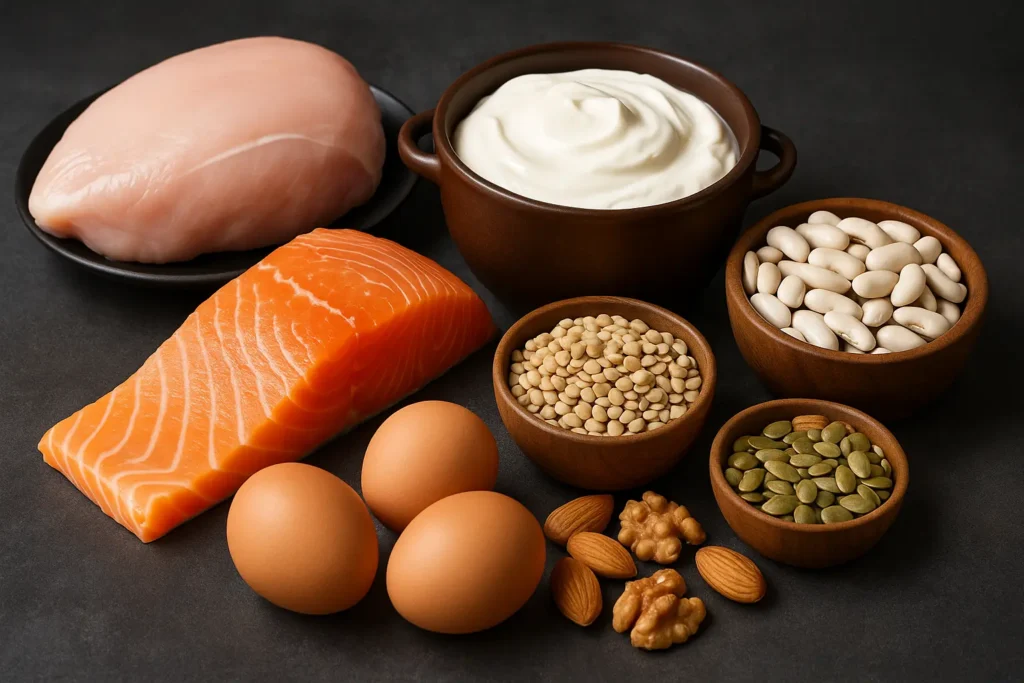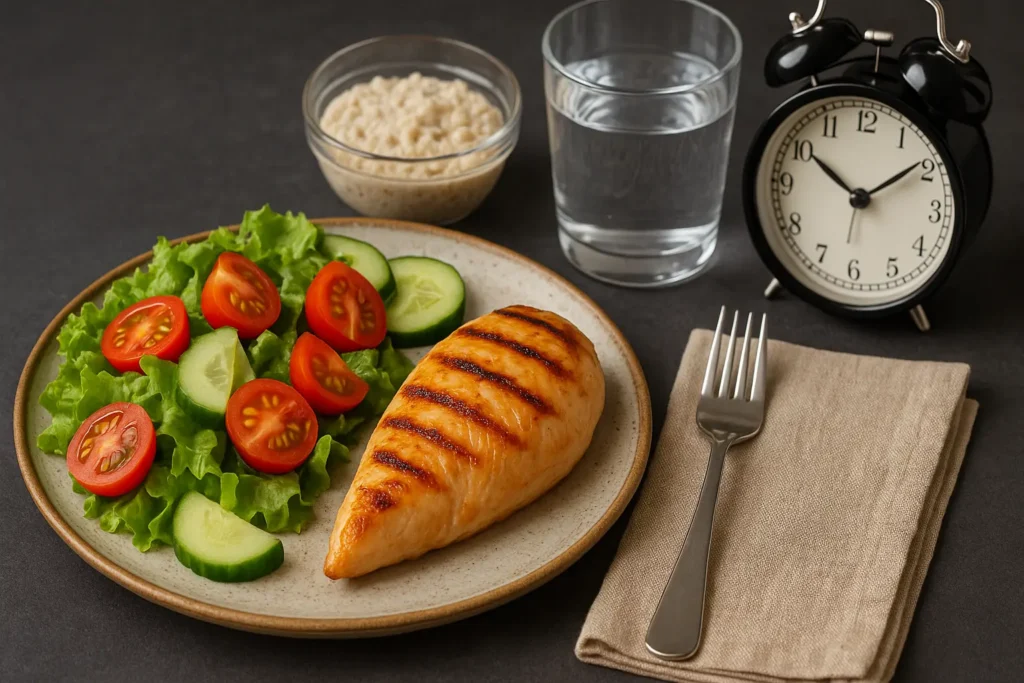Are you frustrated with stubborn fat that just won’t disappear? You’re not alone; millions of people are searching for ways to transform their bodies into fat-burning machines. The good news is that your body is naturally designed to burn fat. You just need to learn how to activate this process effectively.
Your body burns calories throughout the day, even while you sleep. However, some people are more efficient at burning fat than others. Why is this the case? It all comes down to understanding how your metabolism functions and discovering ways to enhance it.
In this article, we’ll explore proven strategies that can turn your body into a fat-burning machine. These methods are backed by science and are easy to follow. Let’s dive in and discover how you can start burning more fat today.
Understanding Your Body’s Fat-Burning System
Before we jump into the strategies, it’s important to understand how your body burns fat. Your body has two main fuel sources: carbohydrates and fats. When you eat carbs, your body uses them for quick energy. When carbs run low, your body switches to burning fat.
This process is called metabolic flexibility. People with good metabolic flexibility can easily switch between burning carbs and burning fat. Those who struggle with weight loss often have poor metabolic flexibility.
Your basal metabolic rate (BMR) is the number of calories your body burns at rest. This includes breathing, circulation, and basic cell functions. The higher your BMR, the more calories you burn throughout the day.

Boost Your Metabolism Through Smart Eating
Eat More Protein To Increase Your Fat Burning
When it comes to fat loss, protein is your greatest ally. It takes more energy to digest protein than carbs or fats. This is called the thermic effect of food. When you eat protein, your body burns extra calories just to process it.
Studies show that eating more protein can boost your metabolism by 15-30% for several hours after eating. This means you’re burning more calories even when you’re not exercising.
How much protein should you eat? Aim for 0.8 to 1 gram of protein per pound of body weight. Good protein sources include:
- Lean meats like chicken and turkey
- Fish and seafood
- Eggs
- Greek yogurt
- Beans and lentils
- Nuts and seeds
Time Your Meals for Maximum Fat Burning
The timing of your meals is just as important as the food you choose to eat. Intermittent fasting has gained popularity because it can enhance your body’s ability to burn fat. During fasting periods, your body depletes its stored carbohydrates and begins to use fat for energy.
You don’t need to fast for several days to see benefits. Even a 12-hour fast between dinner and breakfast can be effective. Some people prefer the 16:8 method, which involves eating within an 8-hour window and fasting for 16 hours.
“Intermittent fasting helps reset your metabolism and improves your body’s ability to burn fat,” says Dr. Jason Fung, a leading expert on fasting and metabolism.
Choose Fat-Burning Foods
Some foods naturally boost your metabolism and help you burn more fat. These include:
Spicy foods contain capsaicin, which can temporarily increase your metabolic rate. Add some hot peppers or cayenne to your meals.
Green tea contains catechins and caffeine that work together to boost fat burning. Drink 2-3 cups daily for best results.
Whole grains require more energy to digest than processed foods. Choose brown rice, quinoa, and oats over white bread and pasta.
Coconut oil contains medium-chain triglycerides (MCTs) that your body burns quickly for energy instead of storing as fat.

Exercise Strategies for Fat Burning
High-Intensity Interval Training (HIIT)
HIIT workouts are one of the most effective ways to turn your body into a fat-burning machine. These workouts involve short bursts of intense exercise followed by rest periods.
HIIT leads to a phenomenon called excess post-exercise oxygen consumption (EPOC), which means your body continues to burn calories at an elevated rate even after your workout ends. Some studies indicate that this effect can last for up to 24 hours.
A simple HIIT workout might look like this:
- 30 seconds of high-intensity exercise
- 90 seconds of rest or low-intensity movement
- Repeat for 15-20 minutes.
You can do HIIT with running, cycling, jumping jacks, or bodyweight exercises.
This practical breakdown from Cleveland Clinic shows how HIIT workouts optimize fat burning long after your workout ends.Strength Training Builds Muscle and Burns Fat
Many people believe that cardio is the only way to burn fat, but that’s not true. Strength training is also crucial for fat loss. Here’s why:
Muscle tissue burns more calories than fat tissue, even when you’re at rest. The more muscle you have, the higher your basal metabolic rate (BMR) will be. This means you’ll burn more calories throughout the day, not just during exercise.
Additionally, strength training creates an afterburn effect similar to high-intensity interval training (HIIT). Your body continues to burn extra calories as it repairs and builds muscle tissue after your workout.
Focus on compound movements that work multiple muscle groups:
- Squats
- Deadlifts
- Push-ups
- Pull-ups
- Lunges
Don’t Forget About Cardio
While strength training is essential, cardiovascular exercise also plays a vital role in burning fat. Engaging in steady-state cardio activities such as walking, jogging, or cycling can help you burn calories and enhance your cardiovascular health.
Finding the right balance is crucial. Health experts recommend aiming for 150 minutes of moderate cardio each week, which can be achieved by doing 30 minutes a day, five days a week.

Lifestyle Factors That Help Fat Burning
Get Quality Sleep for Better Fat Loss
Sleep might be the most overlooked factor in fat burning. Poor sleep disrupts hormones that control hunger and metabolism. When you don’t get enough sleep, your body produces more cortisol (stress hormone) and less leptin (fullness hormone).
This hormonal imbalance increases your hunger and makes your body more likely to store fat, particularly around your midsection. Studies have shown that people who sleep less than 7 hours per night are more likely to be overweight.
To improve your sleep quality:
- Aim for 7-9 hours per night
- Keep your bedroom cool and dark
- Avoid screens before bedtime
- Stick to a consistent sleep schedule
Manage Your Stress To Prevent Fat Storage.
Chronic stress is a major enemy of fat burning. When you’re stressed, your body releases cortisol, which promotes fat storage, especially belly fat. High cortisol levels also lead to increased cravings for sugary, high-calorie foods.
Effective stress management techniques include:
- Regular exercise
- Meditation or deep breathing
- Spending time in nature
- Talking to friends or family
- Pursuing hobbies you enjoy
Stay Hydrated for Optimal Metabolism
Drinking enough water is essential for fat burning. Even mild dehydration can slow down your metabolism. Water is also needed for many metabolic processes, including breaking down fat cells.
Drinking water before meals can help you feel fuller and eat less. Some studies suggest that drinking cold or room-temperature water may slightly help boost metabolism because your body uses energy to warm it up. However, this effect is minimal and not significant for weight loss or overall metabolism.
Aim for at least 8 glasses of water per day, more if you’re active or live in a hot climate.
Supplements That May Help
While a good diet and exercise routine are crucial, some supplements may offer additional support for fat burning.
Caffeine is a well-researched fat-burning supplement that can increase metabolism, helping your body burn more fat during exercise. Green coffee bean extract is also a popular choice.
Protein powder can help you meet your daily protein needs, especially if you’re busy or have a poor appetite.
Omega-3 fatty acids from fish oil may help improve metabolic flexibility and reduce inflammation.
Remember, supplements should never replace a healthy lifestyle. Always talk to your doctor before starting any supplement program.
Common Mistakes That Slow Fat Burning
Eating Too Little
Many people believe that eating a very low-calorie diet will help them lose fat faster. This is wrong. When you eat too little, your body goes into starvation mode and slows down your metabolism to conserve energy.
This makes it harder to burn fat and easier to gain weight when you return to normal eating. Instead of extreme calorie restriction, aim for a moderate deficit of 300-500 calories per day.
Doing Too Much Cardio
While cardio is important, doing too much can actually hurt your fat-burning efforts. Excessive cardio can break down muscle tissue, which lowers your metabolic rate.
It can also increase cortisol levels, leading to increased fat storage. Balance is key. Combine cardio with strength training for the best results.
Ignoring Recovery
Your body burns fat and builds muscle during rest periods, not just during exercise. If you don’t give your body time to recover, you’ll hurt your progress.
Take at least one full rest day each week. Pay attention to your body and take additional rest if you feel excessively tired or sore.

Creating Your Fat-Burning Action Plan
Now that you understand the key strategies, it’s time to create your personal fat-burning plan.
Start with these steps:
- Calculate your protein needs and plan meals around your protein sources.
- Choose an intermittent fasting schedule that fits your lifestyle
- Plan 3-4 strength training sessions per week
- Add 2-3 HIIT workouts to your routine
- Prioritize 7-9 hours of sleep each night
- Find healthy ways to manage stress
- Drink plenty of water throughout the day
Remember, consistency is more important than perfection. Start with one or two changes and gradually add more as they become habits.
Conclusion
Turning your body into a fat-burning machine doesn’t require extreme measures or costly supplements. It simply involves understanding how your body functions and making smart choices about food, exercise, and lifestyle.
Focus on eating adequate protein, timing your meals strategically, and combining strength training with cardio. Don’t forget about the importance of sleep, stress management, and staying hydrated.
The strategies in this article are proven to work, but they require consistency and patience. Your body didn’t gain excess fat overnight, and it won’t lose it overnight either. Give yourself time to see results, and celebrate small victories along the way. Start implementing these fat-burning strategies today, and you’ll be well on your way to achieving your health and fitness goals. Your body has amazing potential—you just need to unlock it.
Disclaimer: This article is for informational purposes only and is not intended to provide medical advice, diagnosis, or treatment. Always seek the guidance of a qualified healthcare provider with any questions you may have regarding your health or a medical condition.
FAQ’s
Q1: What foods help turn your body into a fat-burning machine?
Foods rich in protein, whole grains, green tea, and spicy ingredients like cayenne can boost your metabolism and enhance your fat-burning potential.
Q2: Does intermittent fasting really help burn fat?
Yes, intermittent fasting helps your body switch from burning carbs to fat, improving metabolic flexibility and supporting fat loss when done consistently.
Q3: Is cardio or strength training better for fat burning?
Both are effective, but strength training helps build muscle, which increases your resting metabolism. Combining strength training with cardio gives the best results.
Q4: How much protein should I eat daily to support fat burning?
Aim for 0.8 to 1 gram of protein per pound of body weight daily. Protein supports metabolism, muscle repair, and satiety—key factors in burning fat.
Q5: Can poor sleep really affect fat loss?
Absolutely. Lack of sleep disrupts hunger hormones, increases cortisol, and slows your metabolism—all of which hinder fat burning and promote fat storage.






